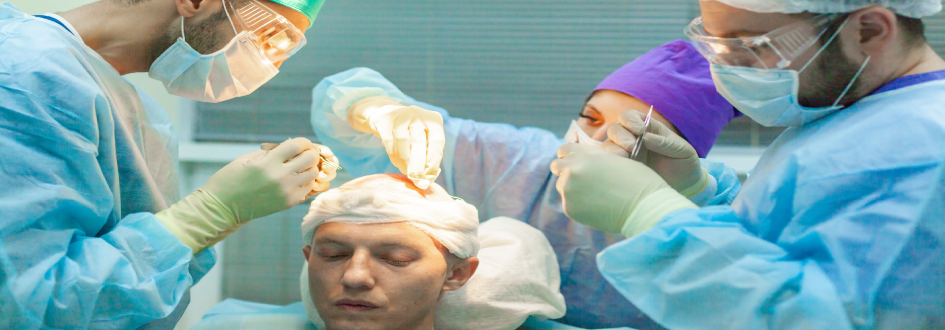
Thinking About Breast Implants? Here’s What You Should Know
Breast implants are a significant decision that can have a lasting impact on your body and life. Whether you're considering them to enhance your breast size, alter their shape, or replace existing implants, it’s essential to understand what the procedure entails and the potential long-term implications. Here’s a comprehensive guide to help you make an informed decision.
Understanding the Basics
Breast implants involve the insertion of a prosthesis under the breast tissue or chest muscles to increase breast size or restore volume. While it’s a common cosmetic surgery, it’s important to note that implants are not lifetime devices. Most implants need to be removed or replaced after about 8 to 10 years due to wear and tear or other complications.
Weighing the Risks and Benefits
Before opting for breast implants, you should carefully consider both the risks and benefits. Implants can boost self-esteem and body image, but they also come with potential risks, including:
- Implant Rupture: Over time, implants may rupture or leak, requiring replacement.
- Capsular Contracture: Scar tissue around the implant can tighten, causing pain or changes in appearance.
- Infection: As with any surgery, there’s a risk of infection, which may necessitate further surgery.
Irreversible Changes
It’s crucial to understand that changes to your breasts after implants may be irreversible. The surgery can alter the natural shape of your breasts, and even after removing the implants, your breasts may not return to their original appearance. Scarring, asymmetry, and changes in nipple sensation are some of the long-term effects to consider.
The Lifespan of Implants
Implants are not designed to last a lifetime. On average, they last between 8 to 10 years, though some may last longer. However, factors such as implant type, surgical technique, and individual body responses can affect their longevity. Be prepared for the possibility of additional surgeries to remove or replace implants in the future.
The Cost Factor
The cost of breast implant surgery goes beyond the initial procedure. You should also consider future expenses, including:
- Replacement Surgery: The cost of removing or replacing implants when they wear out or cause complications.
- Complication Treatments: Additional treatments for issues such as infection or implant rupture.
- Follow-Up Care: Regular check-ups and imaging tests to monitor implant integrity.
Questions to Ask Your Surgeon
Before proceeding with surgery, it’s important to have an in-depth discussion with your surgeon. Here are some key questions to ask:
1. What are the costs, including potential future costs for removal or replacement?
2. What are the surgeon’s credentials and experience with breast implant procedures?
3. What are the risks and possible side effects?
4. How will the implants affect breast cancer screening and detection?
5. What are the long-term implications, such as changes in nipple sensitivity and breast appearance?
Types of Implants
There are different types of breast implants, each with its own advantages and disadvantages. The main types are:
- Saline Implants: Filled with sterile salt water, they are generally considered safer in the event of a rupture but may feel less natural.
- Silicone Implants: Filled with silicone gel, these tend to feel more like natural breast tissue but require regular monitoring to ensure they haven’t ruptured.
- Gummy Bear Implants: A form of silicone implant with a thicker gel, they maintain their shape better but require a longer incision.
The Surgical Procedure
The surgery itself involves making an incision either under the breast, around the nipple, or in the armpit, followed by inserting the implant and then closing the incision. The procedure typically takes 1-2 hours, and you may be able to go home the same day.
Recovery and Aftercare
Recovery from breast implant surgery can take several weeks. During this time, you may experience:
- Pain and Swelling: Common in the first few days post-surgery, these symptoms can be managed with pain medication and rest.
- Bruising and Scarring: Bruising usually subsides within a few weeks, while scars will fade over time but may never fully disappear.
- Restricted Activity: You’ll need to avoid strenuous activity and heavy lifting for at least a few weeks.
Long-Term Considerations
Even after recovery, there are long-term factors to consider:
- Mammograms and Breast Cancer Screening: Implants can interfere with mammograms, so inform your radiographer about your implants to ensure proper imaging techniques are used.
- Breastfeeding: While many women can breastfeed after getting implants, there is a risk of complications that may affect milk production.
- Sun Exposure: Protect your scars from the sun for at least a year post-surgery to avoid permanent pigmentation changes.
Legal and Documentation
If you decide to go ahead with breast implants, ensure all legal documentation is completed. This includes:
- Informed Consent Form: This document confirms that you understand the risks, benefits, and alternatives and are giving your informed consent for the surgery
- Product Registration Card: Provided by the implant manufacturer, this card contains essential information about your implants, which is crucial in case of recalls or advisories.
Ongoing Follow-Up
Regular follow-up with your surgeon or healthcare provider is essential to monitor the condition of your implants and address any concerns. Be vigilant about any changes in your breasts, such as swelling, lumps, or pain, and consult your healthcare provider immediately if you experience any of these symptoms.
Conclusion
Breast implants can significantly impact your life, both positively and negatively. It’s vital to thoroughly research and understand the procedure, the risks involved, and the long-term implications before making a decision. By being informed and asking the right questions, you can make the best choice for your body and health.












